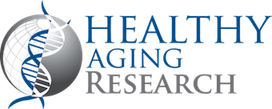
Healthy Aging Research
Open Access
ISSN: 2261-7434
+44-77-2385-9429

ISSN: 2261-7434
+44-77-2385-9429
Perspective - (2023)Volume 12, Issue 2
Sarcopenia, derived from the Greek words "sarx" meaning flesh and "penia" meaning loss, refers to the progressive decline of muscle mass, strength, and function that occurs with aging. As the world's population continues to age, sarcopenia has emerged as a significant health concern affecting millions of older adults worldwide.
Understanding the causes
Several factors contribute to the development of sarcopenia. The primary cause is the natural aging process, which leads to a gradual decline in muscle mass, known as age-related muscle loss (ARML). Hormonal changes, specifically reduced levels of anabolic hormones such as testosterone, growth hormone, and Insulin-Like Growth Factor-1 (IGF-1), play a crucial role in this process. Additionally, chronic inflammation, oxidative stress, poor nutrition, physical inactivity, and certain medical conditions can accelerate the progression of sarcopenia.
Consequences of sarcopenia
Sarcopenia has far-reaching consequences on both physical and functional well-being. Reduced muscle strength and endurance contribute to decreased physical performance, increased risk of falls and fractures, and difficulties with Activities of Daily Living (ADLs). Loss of muscle mass also affects metabolic health, as skeletal muscle is a major site for glucose uptake and utilization. Consequently, sarcopenia is associated with an increased risk of metabolic disorders such as type 2 diabetes and metabolic syndrome.
Diagnosing sarcopenia
Diagnosing sarcopenia involves a comprehensive assessment that includes clinical evaluation, physical performance tests, and imaging studies. The European Working Group on Sarcopenia in Older People (EWGSOP) has proposed a consensus definition and diagnostic criteria for sarcopenia. These criteria include the measurement of muscle mass using techniques like Dual-Energy X-Ray Absorptiometry (DXA) or Bioelectrical Impedance Analysis (BIA), along with the assessment of muscle strength and physical performance.
Management strategies of sarcopenia
Managing sarcopenia requires a multidimensional approach, addressing the underlying causes and implementing lifestyle modifications. Exercise is considered the cornerstone of sarcopenia management. Resistance training, including weightlifting, has been shown to stimulate muscle protein synthesis, improve muscle strength, and enhance overall physical function. It is essential to tailor exercise programs to individual needs, taking into account factors such as age, fitness level, and existing health conditions.
Adequate nutrition plays a vital role in supporting muscle health. Older adults should focus on consuming a balanced diet rich in high-quality protein, which provides the necessary amino acids for muscle protein synthesis. Additionally, ensuring an adequate intake of essential nutrients such as vitamin D, calcium, and omega-3 fatty acids is crucial for maintaining muscle health.
Hormone Replacement Therapy (HRT) has shown promise in managing sarcopenia, particularly in individuals with hormonal deficiencies. Testosterone replacement therapy has been shown to improve muscle mass, strength, and physical performance in hypogonadal men. However, the risks and benefits of HRT should be carefully evaluated on an individual basis, considering the potential side effects and contraindications.
Prevention is a key when it comes to sarcopenia. Leading a physically active lifestyle from an early age can help build and maintain muscle mass, reducing the risk of sarcopenia later in life. Engaging in regular aerobic exercise, resistance training, and activities that challenge balance and coordination can all contribute to muscle health. Moreover, addressing modifiable risk factors such as obesity, smoking, and sedentary behaviour can also play a significant role in prevention.
Citation: Sadowsky CL (2023) Sarcopenia: The Age-Related Loss of Muscle Mass and Function. Healthy Aging Res.12:169
Received: 19-May-2023, Manuscript No. HAR-23-24529; Editor assigned: 22-May-2023, Pre QC No. HAR-23-24529 (PQ); Reviewed: 06-Jun-2023, QC No. HAR-23-24529; Revised: 13-Jun-2023, Manuscript No. HAR-23-24529 (R); Published: 20-Jun-2023 , DOI: 10.35248/2261-7434.23.12.169
Copyright: © 2023 Sadowsky CL. This is an open-access article distributed under the terms of the Creative Commons Attribution License, which permits unrestricted use, distribution, and reproduction in any medium, provided the original author and source are credited.